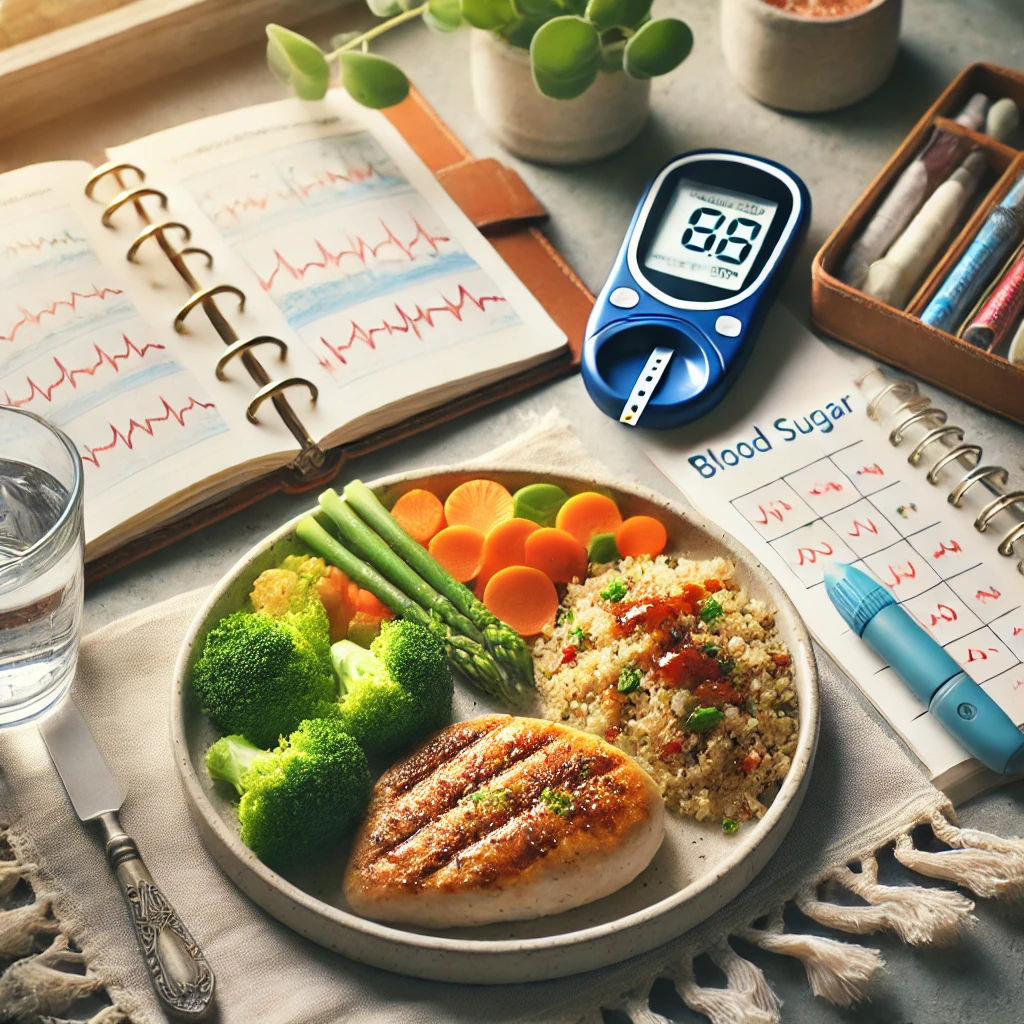Welcome back! In our previous posts, we uncovered some startling facts about diabetes and prediabetes. We recognized the need for change but held off on diving into specifics. Well, the wait is over. In this article, we're going to reveal practical strategies to regain control over your blood sugar.
The biggest problem for people trying to improve their blood sugar is that they don't know how to eat to make the desired changes. So let’s talk about some practical ways to keep your blood sugar under control.
*Quick Tricks for Immediate Results*
Let's start with some "hacks" you can put into action right away to lower your blood sugar levels. These small changes can lead to significant improvements:
- **Exercise After Eating**: Did you know that a quick 20-minute walk after a meal can significantly lower your blood sugar levels? Short on time? You can do straightforward bodyweight exercises like air squats and push-ups to burn up sugar in your muscles, helping your body absorb excess sugar from your blood.
- **Apple Cider Vinegar**: Taking a tablespoon of apple cider vinegar 20 minutes before a meal (especially a high-carb meal) might not be the tastiest option, but it can help reduce the spike in blood sugar after eating, as research studies have shown.
- **Don’t Eat ‘Naked’ Carbs'**: How your body responds to high carb or sugary foods and drinks can vary dramatically based on what you eat with those carbs. For example, eating a plain piece of toast for breakfast is very common. However, bread has a very high glycemic index (in fact, it is higher than table sugar itself) and eating it ‘naked’ will quickly spike your blood sugar. Now if you were to eat that piece of toast with a source of high-quality fats and proteins, the blood sugar spike will be significantly muted. Good examples would include adding some avocado or nut butters to the bread, not only making it tastier but healthier as well.
These simple hacks are fantastic for quick wins, but for long-term control over your blood sugar, we need to rethink how we eat. Our strategy employs two tactics to regain control: intermittent fasting and low-carb eating.
*The Magic of Intermittent Fasting*
You’ve probably heard the term ‘intermittent fasting’ but might not know exactly what it entails. When you are intermittent fasting, it means that for a specified period of time, you are consuming no calories and eating in a shortened window.
Eating windows vary, typically from 1 hour per day (known as OMAD or ‘One Meal a Day’) to up to a 10-hour eating window. However, the most common way to do intermittent fasting is the 16:8 plan which means you are fasting for 16 hours and eating all of your meals and consuming all of your calories for the day in an 8-hour window.
This will vary from person to person as a 12-hour fast might be difficult for some while others will have little problem fasting for 20+ hours. Personally, I like to fast for about 20 hours. Typically I will eat lunch at 2 and dinner at 6, and I don’t find this to be that difficult.
What makes this difficult for a lot of people is that we are a nation of snackers. The typical American eats 3 meals per day and snacks 3-4 times per day. It is not uncommon for people to be eating every couple of hours from the time they get up to near bedtime, often having a 16-hour eating window. If you’re drinking soda or a sugary Starbucks drink in between meals, that’s just another blood sugar spike your body has to deal with.
Now I know some of you are thinking that we’re told we should be eating 5-6 small meals per day every 3 hours or so. Let’s think about the history of the human race…
100 years ago you didn’t have a pantry full of boxed foods, a fridge full of sugary treats, and a freezer full of microwavable dinners. You could snack on nuts or fruits and vegetables, but in general, if you wanted to eat, you had to cook a meal. 3 meals per day is fairly new over the last few hundred years.
For most of human history, people ate only once or twice per day. In harsher areas or times, it wasn’t uncommon to go multiple days without food. 5-6 meals per day is a fallacy brought by modern times with easy access to junk food. As Thomas Jefferson said in one of his 10 rules of life… ‘We never repent of having eaten too little’.
*Low-Carb Eating*
There are many diets and ways of eating that are considered ‘low carb’. You’ve probably heard of keto or the ketogenic diet which requires you to keep your carbs around 25-50 grams per day. Then there is the more extreme carnivore diet that is near zero carbs as you’re getting all of your calories from meat, eggs, and maybe some dairy. When we say low carb diet, we’re talking about getting between 50-100 grams of carbs per day.
In his book ‘The Primal Blueprint’, Mark Sisson described this 50-100 gram range as the weight loss sweet spot. The average American is consuming about 250 grams of carbs per day, and most of them are not from healthy sources like vegetables. The ketogenic diet can be a great way to lose weight quickly and to get your blood glucose down fast. However, it is difficult to keep up for a long period of time and may lose some of its benefits if done for too long. Staying under 100 grams of carbs is not difficult, especially if you’re only eating 2 times per day with intermittent fasting.
*The Power of Combining Strategies*
Now what happens when you combine these two tactics? You have a synergistic effect. During your fast, you’re not eating so there won’t be any wild swings in blood sugar. When you are in your eating window, you’re keeping your carbs in a healthy range so there won’t be any wild swings during that period either. Over the course of a few days or weeks of eating like this, your fasting blood sugar should come down into the normal range. Eat this way for a few months and your A1C will improve as well.
*Addressing Concerns*
Now, let's address a few objections you may have:
- **Hangriness**: When you don’t eat, you feel a little weak, or you get hangry. This is happening because your blood sugar is dipping a little low, and your body is used to being fed frequently. This may happen but will pass with practice, especially if you’re not having giant blood sugar swings from eating sugar and simple carbs. This is also why it is important to extend the fasting period gradually. If you’re used to eating 6 times per day for 16 hours, jumping into a 20-hour fast might not be a great idea.
- You love (fill in the blank with a food) and you just don’t think you can give it up. If you notice, we didn’t mention any specific foods you had to give up. You just have to eat them in a specified time window and keep your carbs in the 50-100 gram zone. You can still have a few slices of pizza here and there or go out for ice cream with your kids. This isn’t a diet. It’s a practical way of eating that can actually be enjoyable and easy to follow.
If you've found value in this blog post series or have questions, please leave a comment below.



